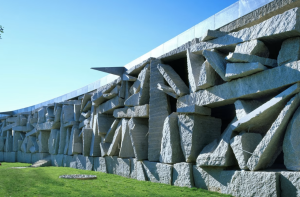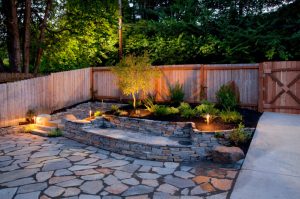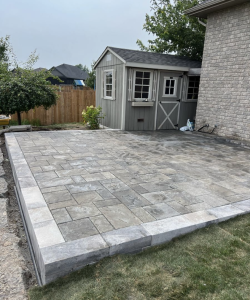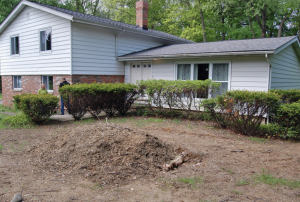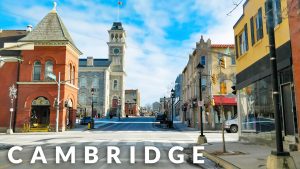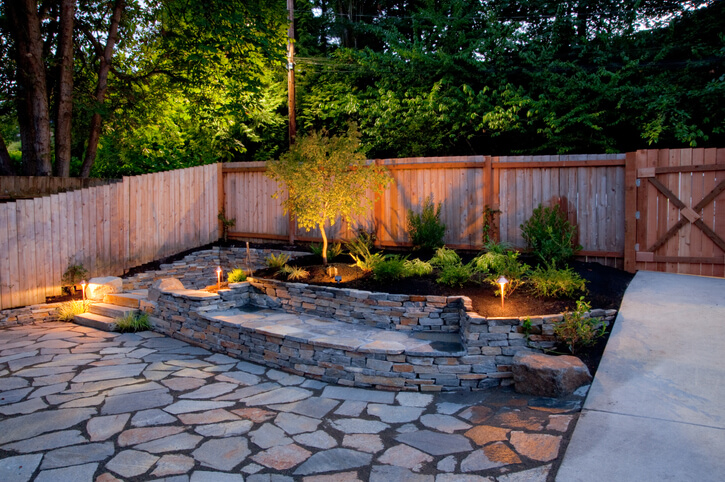
Your backyard has the potential to be an extension of your living space, a place for relaxation, entertainment, and connection with nature.
But achieving this outdoor oasis requires careful planning and execution.

Contact us now via text or phone: (519) 208-8680
Hardscaping, the use of non-living materials to create structure and function in your landscape, plays a vital role in transforming your backyard into a dream destination.
This blog delves into the world of hardscaping, exploring the common materials used, popular hardscaping features, and essential tips for a successful project.
By understanding the various options and considerations, you can create a beautiful, functional, and long-lasting outdoor space.
A Breakdown of Common Hardscaping Materials
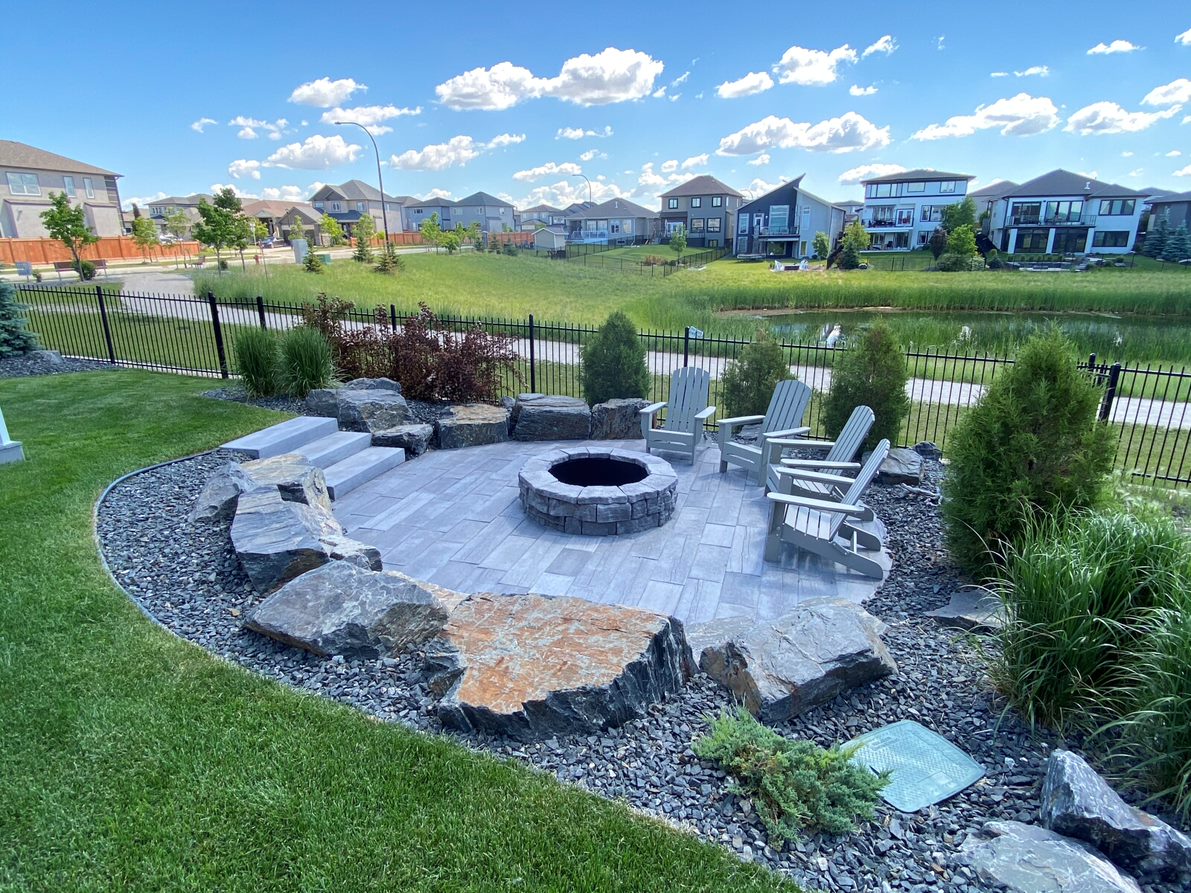
Bricks
A timeless choice for paths, patios, and edging, bricks offer a classic look and undeniable strength.
They add warmth and character, seamlessly integrating into both traditional and contemporary landscapes.
Concrete
Known for its versatility and affordability, concrete is a popular hardscaping material.
It can be pre-cast into pavers for patios and walkways or poured on-site for features like retaining walls.
Concrete also offers decorative options with colored and stamped finishes.
Gravel and Pebbles
An economical solution for paths, driveways, and drainage areas, gravel and pebbles are easy to install and complement most design styles.
Metal
Metals like steel, aluminum, and wrought iron find their place in garden edging, fences, gates, and other outdoor structures.
Corten steel, with its unique rust-like appearance, has become a popular choice for its aesthetic appeal and durability.
Stone
Local and imported stones offer a durable, versatile, and visually pleasing option for paths, walls, and decorative features.
Basalt, schist, limestone, and river stones are commonly used varieties.
Synthetics
Composite materials are gaining traction for decks and edging due to their low maintenance, affordability, and durability.
They can closely resemble natural materials like wood or stone.
Timber
Wood remains a classic choice for decks, fences, pergolas, raised garden beds, and more.
There’s a wide range of native and exotic options available, along with treated pine for enhanced durability.
Prime Examples of Hardscaping Features

Once you’ve chosen your materials, it’s time to explore the features that will bring your landscape to life.
Here are some popular options to consider:
Decks
Wood and composite decks create elevated outdoor living spaces, extending your home into the backyard and increasing your property value.
Driveways
Every home needs a driveway, and you have choices! Concrete, asphalt, gravel, and paving are the most common options.
Fences and Gates
Fences and gates provide privacy, security, and define property boundaries.
They can also frame your outdoor space beautifully.
Fire Pits and Outdoor Fireplaces
These features create a focal point and source of warmth for cool evenings, adding a touch of magic to your outdoor space.
Outdoor Kitchens and Grills
Take your outdoor entertaining to the next level with a dedicated kitchen area.
The convenience and ambience it creates are priceless.
Pergolas and Gazebos
Offering shade and shelter during the summer, pergolas and gazebos can become beautiful focal points when adorned with climbing plants.
Patios
Patios provide a durable and level surface for entertaining, dining, or simply relaxing outdoors.
Materials like concrete, pavers, stone, or brick can be used for their construction.
Retaining Walls
Essential for managing slopes and preventing soil erosion, retaining walls create usable spaces for planting and add visual interest to your landscape.
They can be built from stone, concrete blocks, timber, or poured concrete.
Walkways and Paths
Guide movement through your garden with walkways and paths.
Materials like concrete, flagstone, gravel, or brick can be used to create a visually pleasing flow.
Water Features
A water feature, like a fountain, pond, stream, or waterfall, adds a unique and serene touch to your outdoor space, attracting wildlife and creating a calming atmosphere.
The Synergy Between Hardscaping and Softscaping
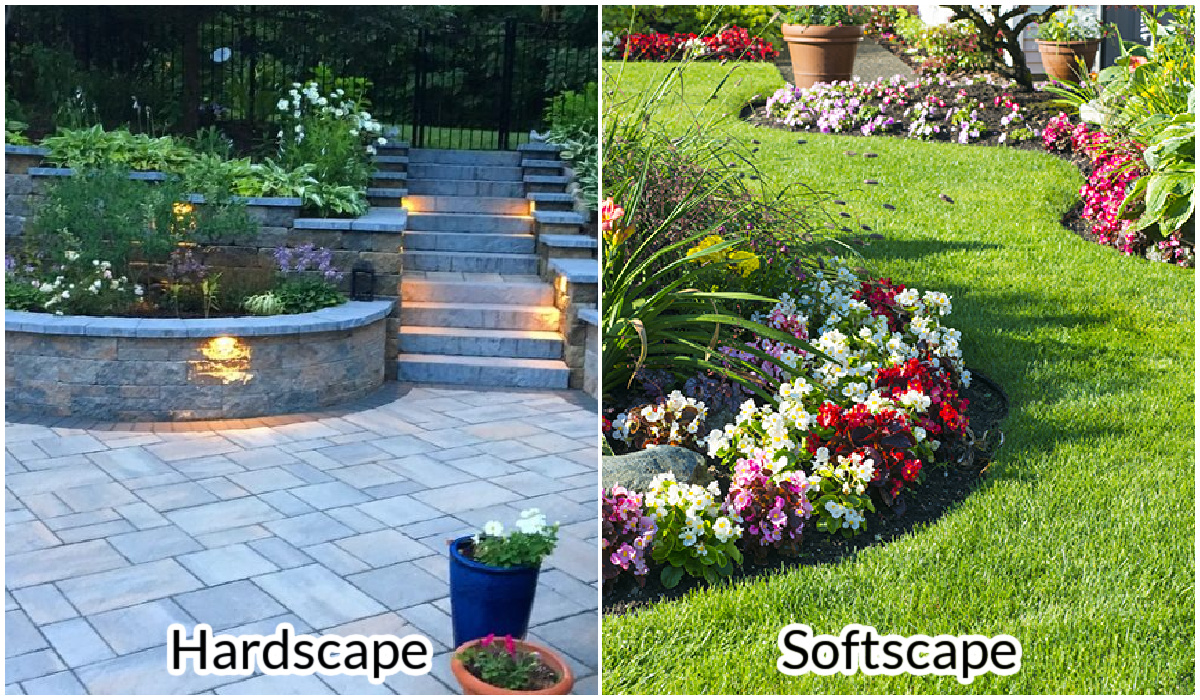
Hardscaping exists in beautiful harmony with softscaping, the use of plants and other living elements in landscape design.
Softscaping brings vibrancy and life to your outdoor space, with flowers, grass, shrubs, and trees playing a vital role.
A successful landscape design balances hardscape and softscape elements seamlessly.
Hardscaping provides structure and functionality, while softscaping adds a touch of nature and visual appeal.
Consider integrating climbing plants on a pergola or strategically placing planters around a patio to achieve a cohesive and aesthetically pleasing result.
Ideally, hardscape features are installed first, followed by the introduction of softscaping elements.
Tips for a Successful Hardscaping Project
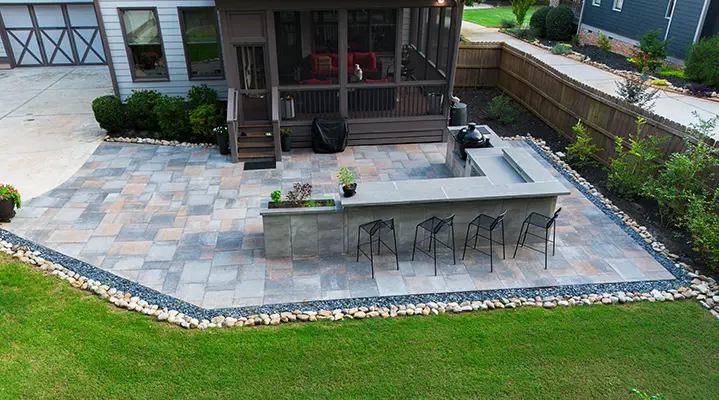
Here are some crucial tips to ensure your hardscaping project is a success:
Think Holistically
Hardscape elements are more than just functional features; they contribute to the overall character and organization of your outdoor space.
Consider their potential beyond practicality.
For example, a retaining wall can not only prevent erosion but also create a platform for a stunning water feature, reflecting your personality and interests.
Material Selection Matters
Hardscaping materials will be exposed to the elements year-round, so choose wisely.
Consider your local climate and how a material will withstand weather conditions.
Think about the aesthetics too.
Understanding how color and texture will complement your surroundings is vital for creating a harmonious look.
Observe Your Surroundings
Careful planning is essential for a successful hardscaping project.
This includes a close examination of your existing landscape.
For instance, when installing a gazebo, consider the placement of nearby trees to avoid potential damage from falling branches during storms.
Plan and Budget Appropriately
Planning and budgeting are the initial steps of any successful hardscaping project.
Prioritize essential elements, factor in the overall cost, consider potential professional involvement, and weigh the long-term benefits of your investment.
Creating a cohesive design plan for your entire yard will prevent future conflicts with additional projects.
Consulting with professionals for budget-friendly alternatives can save you money without sacrificing quality.
Utilize tools like material calculators to stay on budget and avoid unnecessary expenses.
Prioritize Site Preparation and Installation
The success of your project, especially larger ones, hinges on proper site preparation and installation.
This involves a thorough site evaluation to assess suitability for your desired hardscaping features.
Consider factors like size, accessibility, slope, and soil properties.
Hiring experienced professionals for this crucial step can prevent unwanted surprises after completion.
Work with Trusted Professionals
Engaging experienced hardscaping professionals can guarantee high-quality results and avoid common installation pitfalls.
Their guidance is particularly valuable in designing and balancing hardscape with softscape in unique or challenging environments.
For complex projects or those involving plumbing, electrical, or gas connections (like outdoor kitchens), qualified professionals are essential.
They bring a wider range of materials and expertise to the table, ensuring a successful outcome.
Remember, this is an area where skimping on quality can be costly in the long run.
Maintain and Care for Your Hardscape
Maintaining your hardscaping features is just as important as proper installation.
Regular cleaning preserves the appearance, safety, and durability of your materials.
Applying protective sealants or fresh coats of stain at intervals can shield hardscape surfaces from weather damage.
While hardscaping is generally low-maintenance, a little care goes a long way in maximizing your investment.
Conclusion
Hardscaping offers a world of possibilities to transform your outdoor space into a beautiful and functional haven.
By understanding the various materials, popular features, and essential planning tips, you can embark on your hardscaping project with confidence.
Remember, a successful project requires careful consideration, quality materials, and professional expertise when needed.
With the right approach, you can create a backyard that reflects your style, enhances your property value, and provides a place for lasting memories with loved ones.


